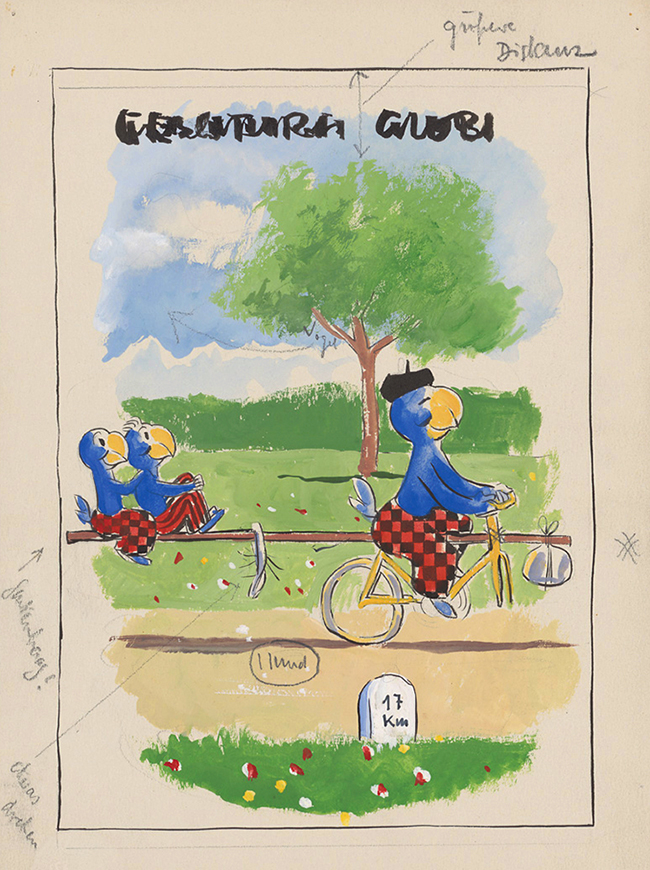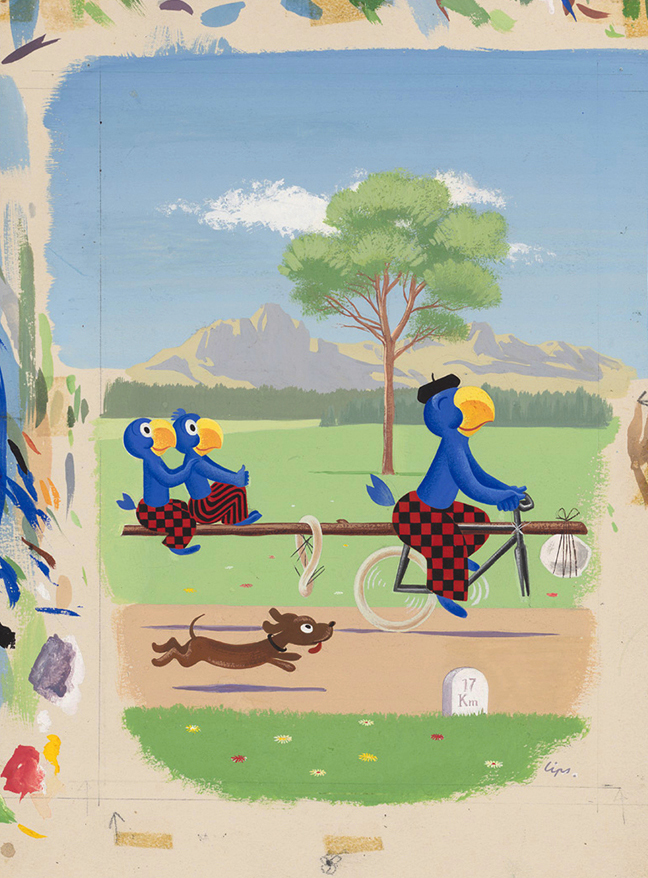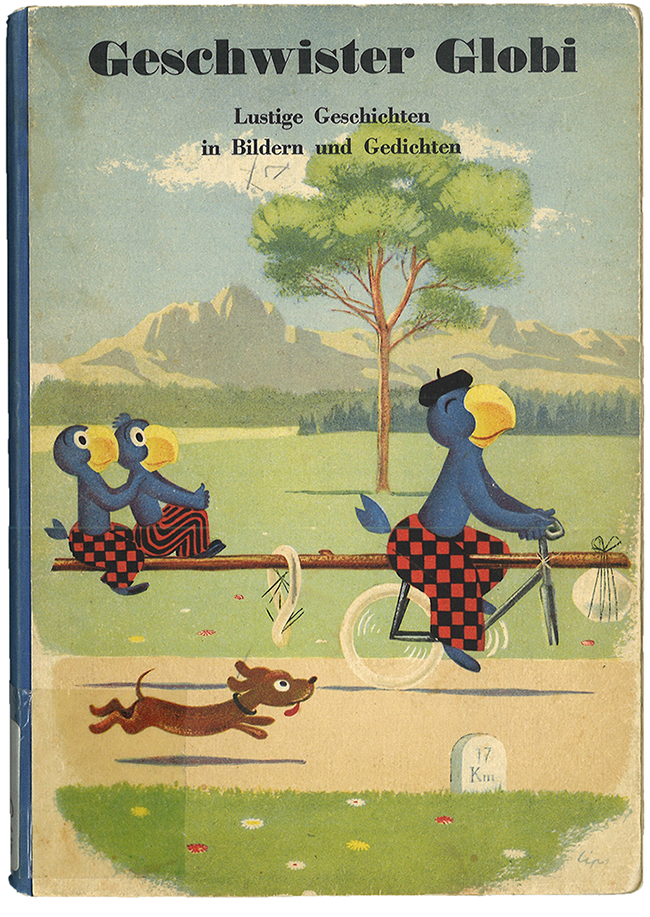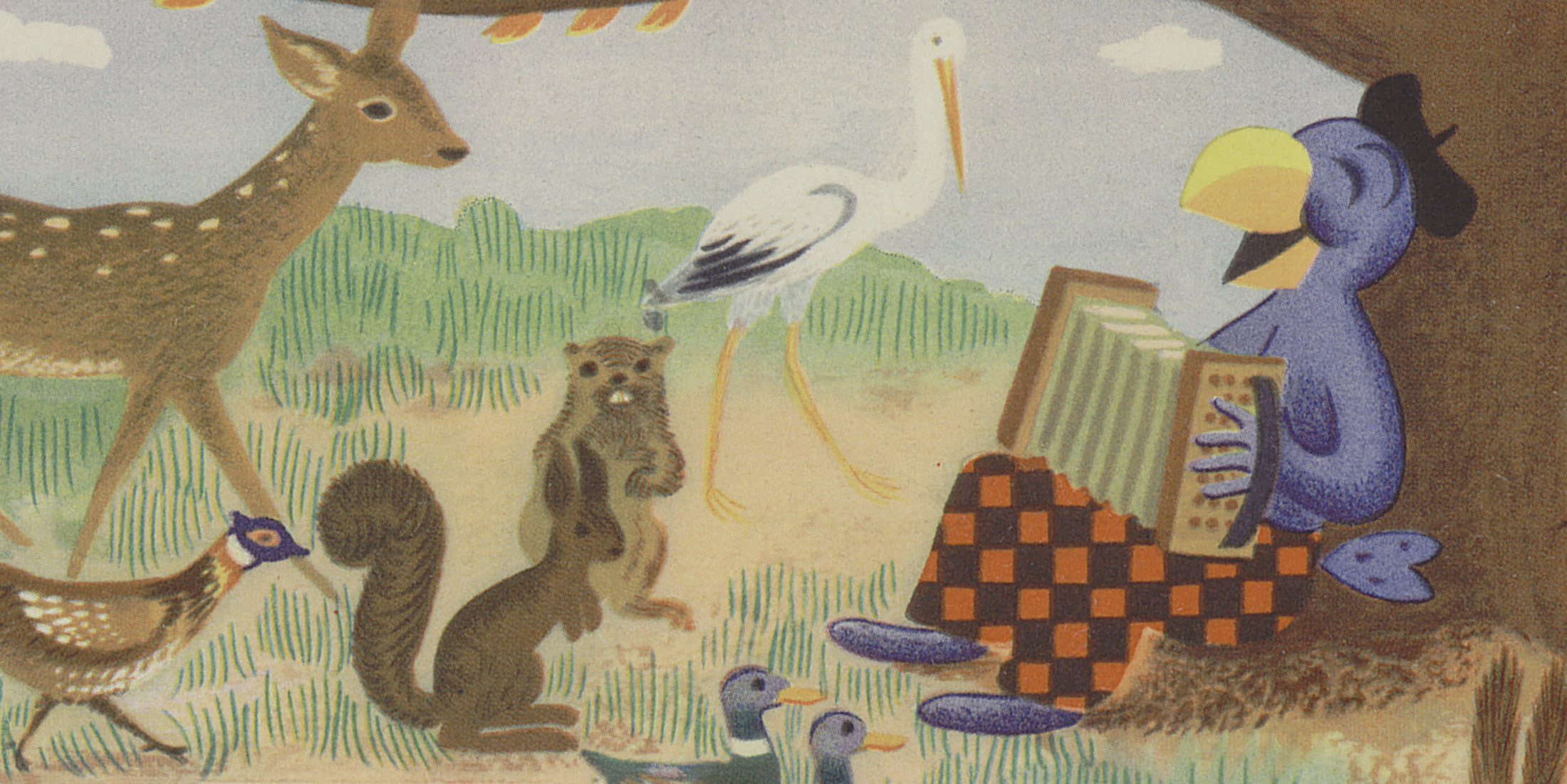
Beloved by children, a bête noire for adults: Globi at the Zentralbibliothek
Originally an advertising mascot for the Globus department store, Globi the cartoon bird has dominated the world of Swiss children’s literature since 1932. A treasure trove of books, documents, objects and drawings in the Zentralbibliothek Zürich document the history of this entertaining and polarising figure straddling the worlds of branding and children’s books.
Brand mascot and hero of children’s books
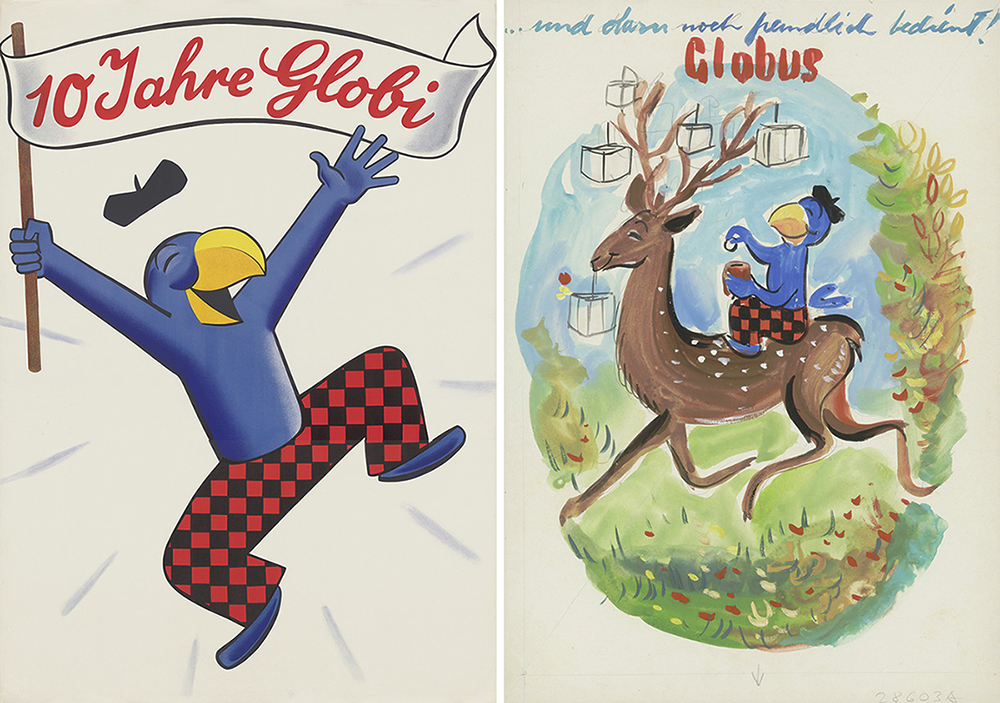
Brand mascot Globi first appeared in 1932 to celebrate the Globus department store’s 25th anniversary. The idea behind Globi was ‘hatched’ by adman and Globus head of publicity Ignatius Karl Schiele (1902–1988). Robert Lips (1912–1975) illustrated Globi picture books and designed posters and promotional items featuring the bird. The character’s genesis can be traced through various designs and preliminary sketches for covers and illustrations.
While children quickly took the character to their hearts, Globi often proved more troublesome for grown-ups. Initially, on the children’s literature scene, people took issue with the stories’ unbridled imagination or rejected the form of the picture book. Later, the ‘blatant racism’ of books such as ‘Globi im Urwald’ (Globi in the Jungle) and ‘Globi bei den Indianern’ (Globi and the Indians) drew criticism. Today, once again, Globi is viewed from a new perspective, for instance, in terms of his relationship to poverty.
Globi: a bird of many talents
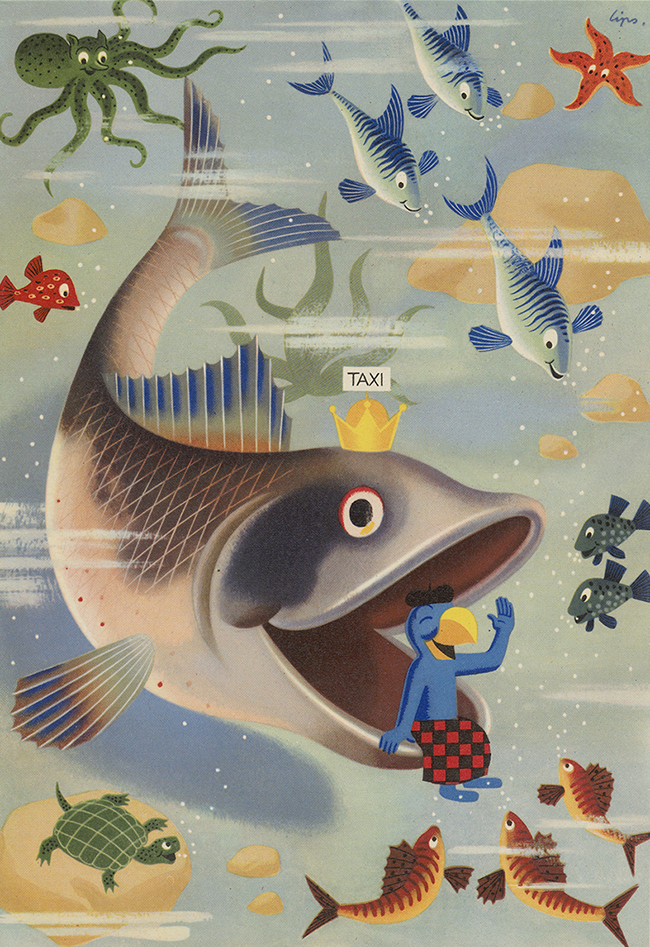
Globi helped children travel to far-off fantasy worlds, from desert islands and fairytale landscapes to the seabed. 1935 saw the release of ‘Globis Weltreise’ (Globi’s World Tour), followed by many more publications, some of which appeared in several editions. Altogether, 95 Globi books have since made their way onto the shelves. A 2012 anniversary edition compiled the best stories from the past 80 years. The character won hearts from the very start on colourful covers and in stories illustrated in black-and-white.
Some fascinating Globi projects never saw the light of day. A volume potentially in the pipeline would have seen Globi make it to the moon in 1940 – long before Apollo 11. Lips had Globi pilot a spaceship and make contact with extraterrestrials. An actual book about Globi in space didn’t appear until 1990.
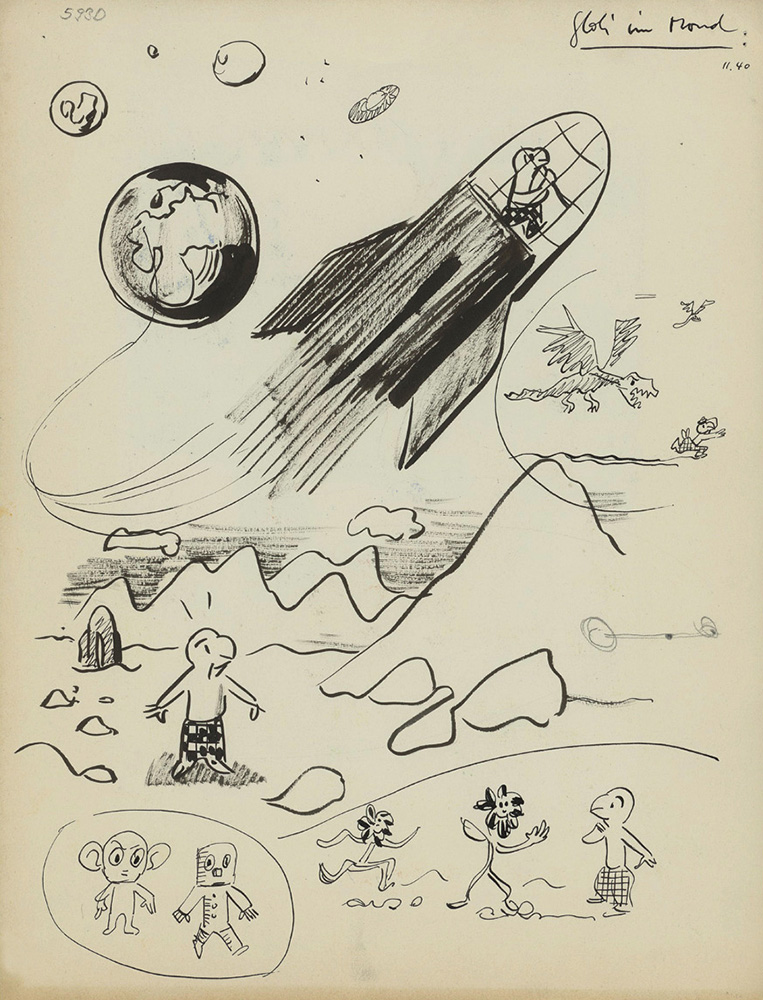
Globi gets his own magazine
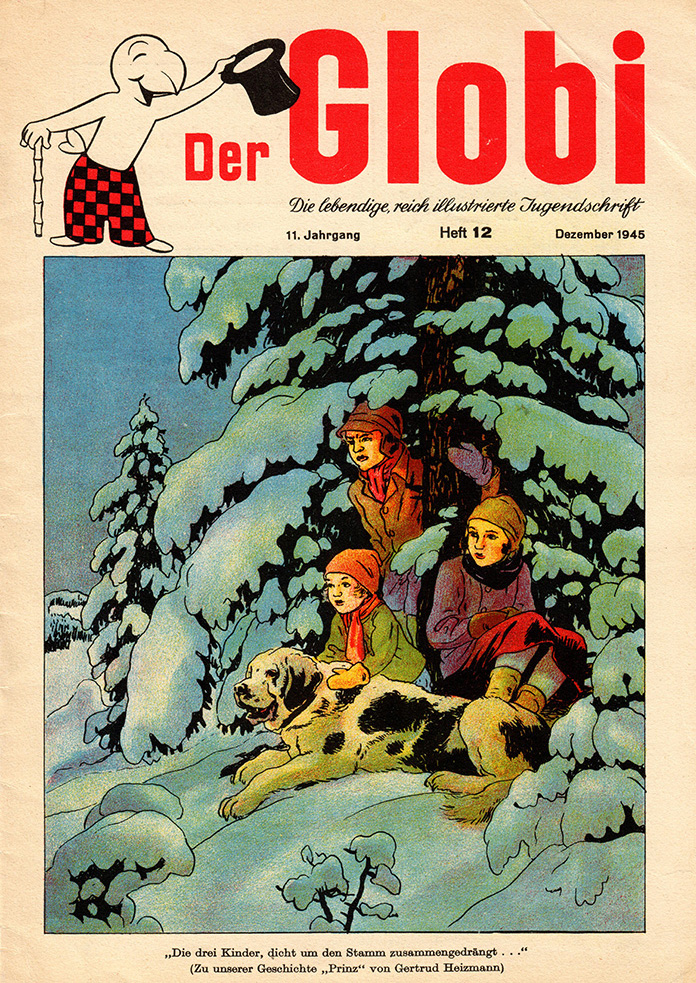
In addition to the two Globi books that appeared each year, a magazine, ‘Der Globi’, was printed from Christmas 1934 until 1970. Issues landed on subscribers’ doormats every month: designed in a handy, easy-to-read format, the magazine came packed with illustrated Globi stories, articles on all kinds of useful information, puzzles, competitions and arts and crafts activities. It also printed drawings and arts and crafts projects by children who were appreciated and taken seriously as readers and contributors alike. Children’s drawings also made their way into the ‘Globi-Illustrierte’ magazine celebrating the bird’s 20th birthday in 1952.
Globus head of publicity J.K. Schiele came up with the idea of combining children’s culture and advertising. Alongside many of Lips’s original drawings, he also left behind a large collection of promotional material that shows just how intensively the adman worked on publicity and its impact. In 1961, Globus also congratulated Schiele on his ‘creative work’ as an advertiser in a publication of his very own.
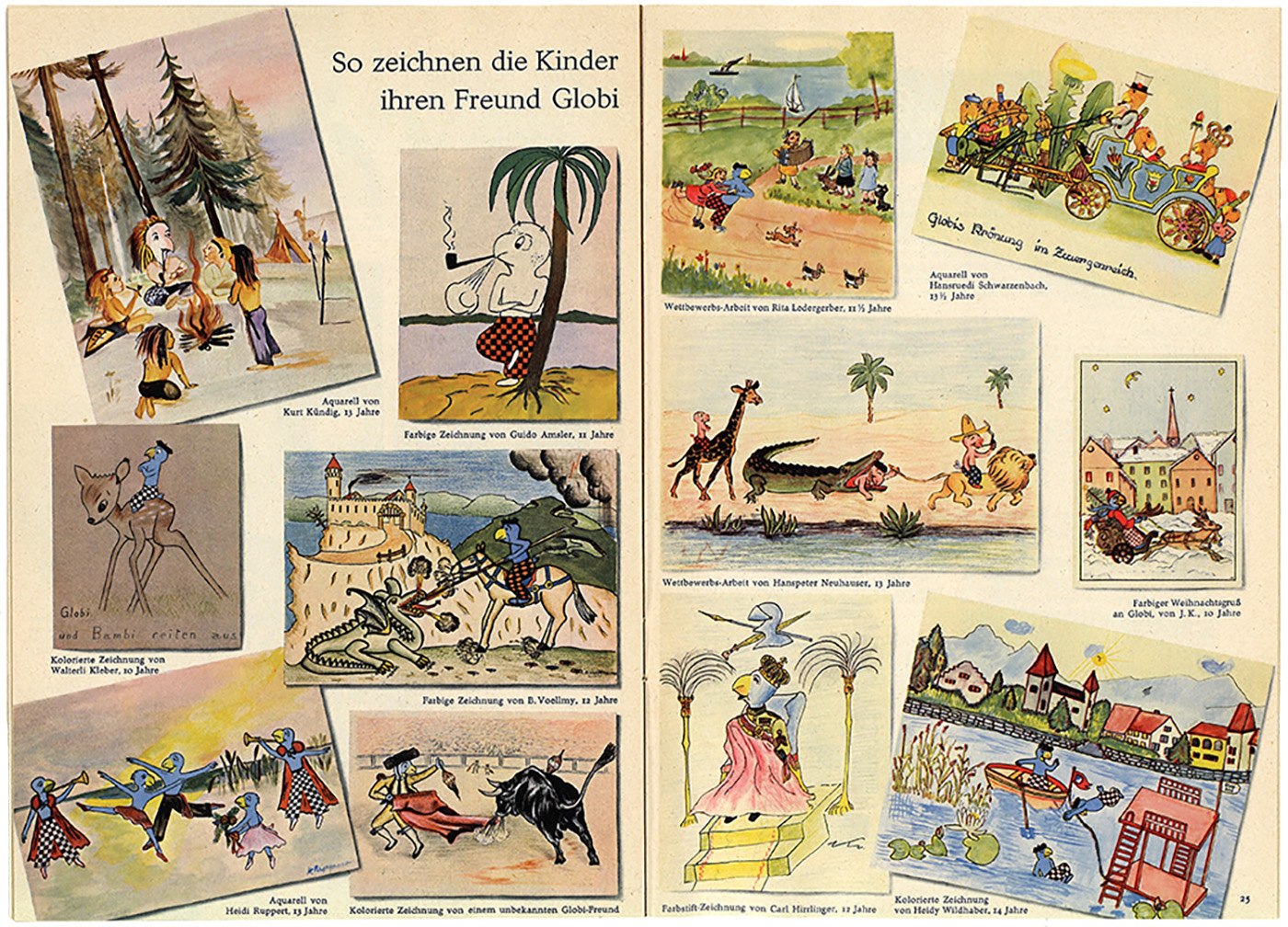
Globi in competition
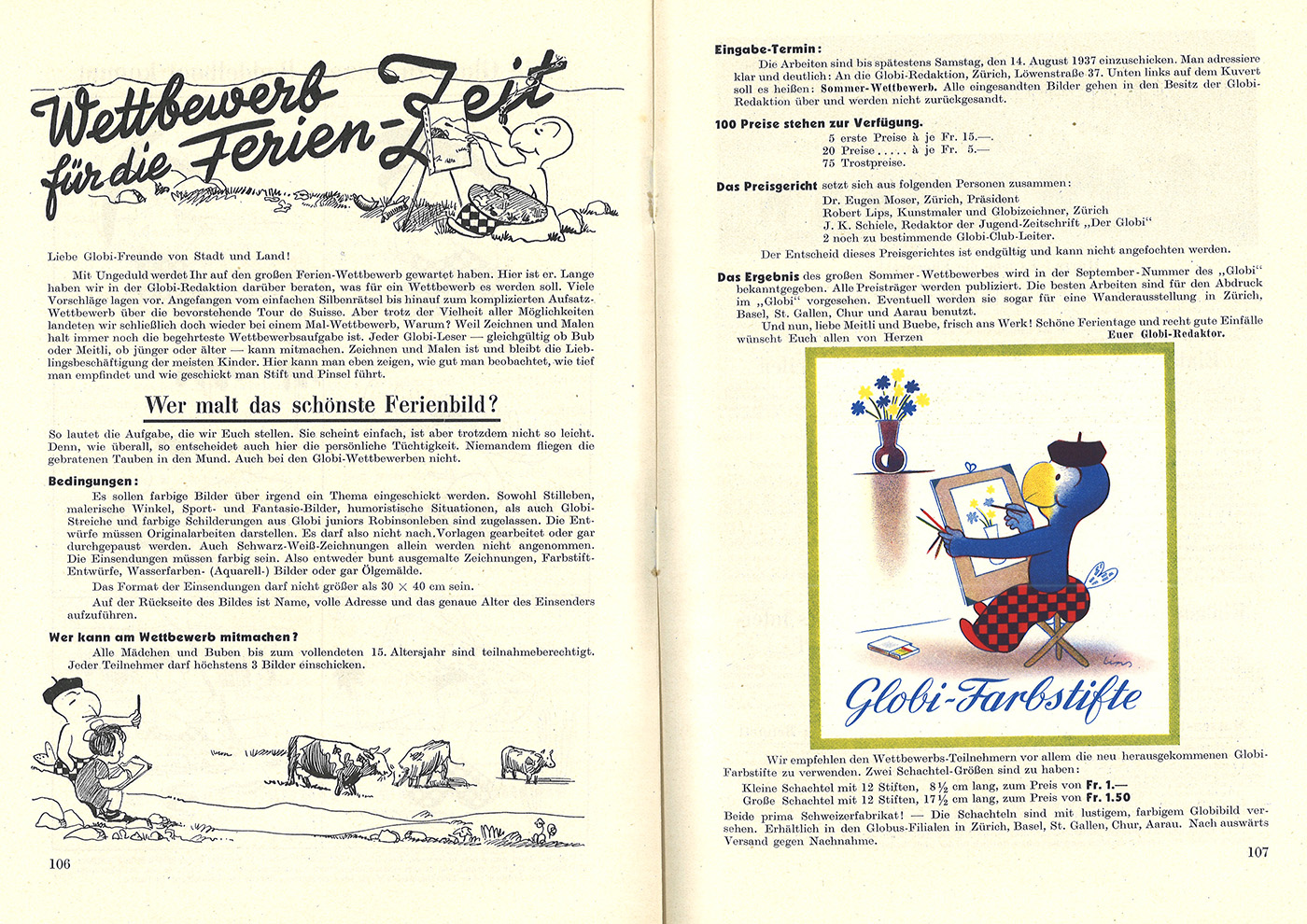
Crafts and drawing contrasts were among the regular features of the Globi magazine from 1935 onwards. For instance, competition entrants in summer 1936 were asked to provide a ‘funny Globi moment’ in words or images. 1937’s competition asked: ‘Who can make the best holiday picture?’, combined with advertising for Globi coloured pencils. The winning picture ‘Globi and the Gnomes’ was found among Schiele’s estate many years later.
Works of art depicting the Swiss national exhibition in 1939 from the ‘What I saw and did at the Landi’ competition have the feel of historic documents. The mobilisation of Swiss men and the Second World War were also the topic of drawing competitions. By inspiring them to write about and draw their experiences, hopes and fears, they also gave children a useful outlet. They’re further proof of the lasting creative stimulus sparked by Globi.
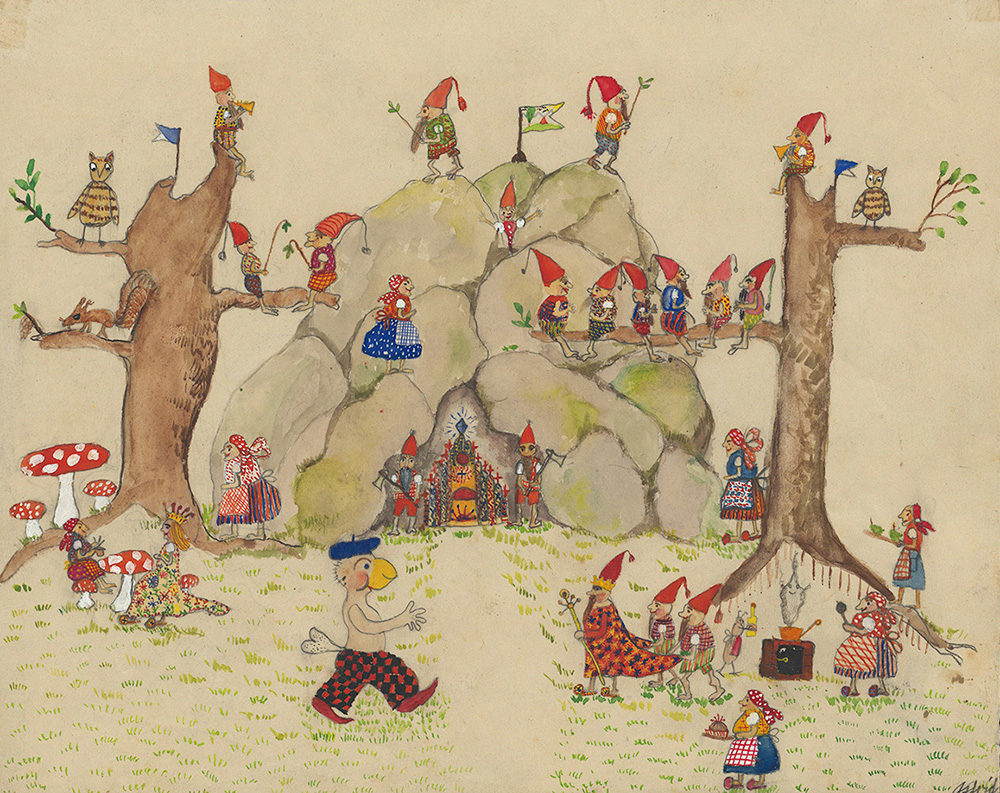
Three photo albums
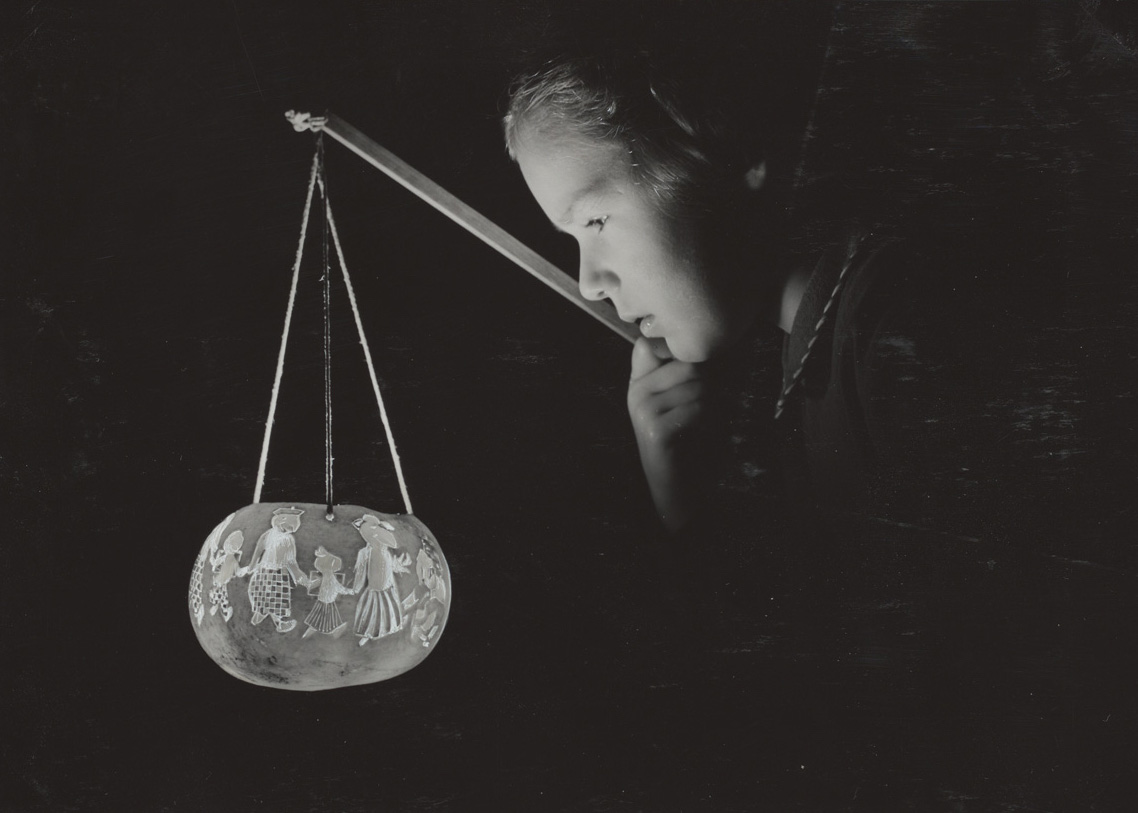 The three large-format albums, published between 1932 and 1940, featured photographs of all kinds of arts and crafts projects children sent to Globi over the years, alongside advertising promotions and window displays. The various arts and crafts are proof of just how much the character sparked children’s imaginations and creativity. Some works of art could only be ‘preserved’ in photographic form, such as a snowman or a Turnip lanterns, or inspired their own displays, such as a plasticine Globi placed on a Zurich street. They were printed in the Globi magazine and awarded prizes. All these friendly gifts and competition entries illustrate the smart marketing strategy behind the character and the deep connection children felt to their ‘friend’ Globi.
The three large-format albums, published between 1932 and 1940, featured photographs of all kinds of arts and crafts projects children sent to Globi over the years, alongside advertising promotions and window displays. The various arts and crafts are proof of just how much the character sparked children’s imaginations and creativity. Some works of art could only be ‘preserved’ in photographic form, such as a snowman or a Turnip lanterns, or inspired their own displays, such as a plasticine Globi placed on a Zurich street. They were printed in the Globi magazine and awarded prizes. All these friendly gifts and competition entries illustrate the smart marketing strategy behind the character and the deep connection children felt to their ‘friend’ Globi.
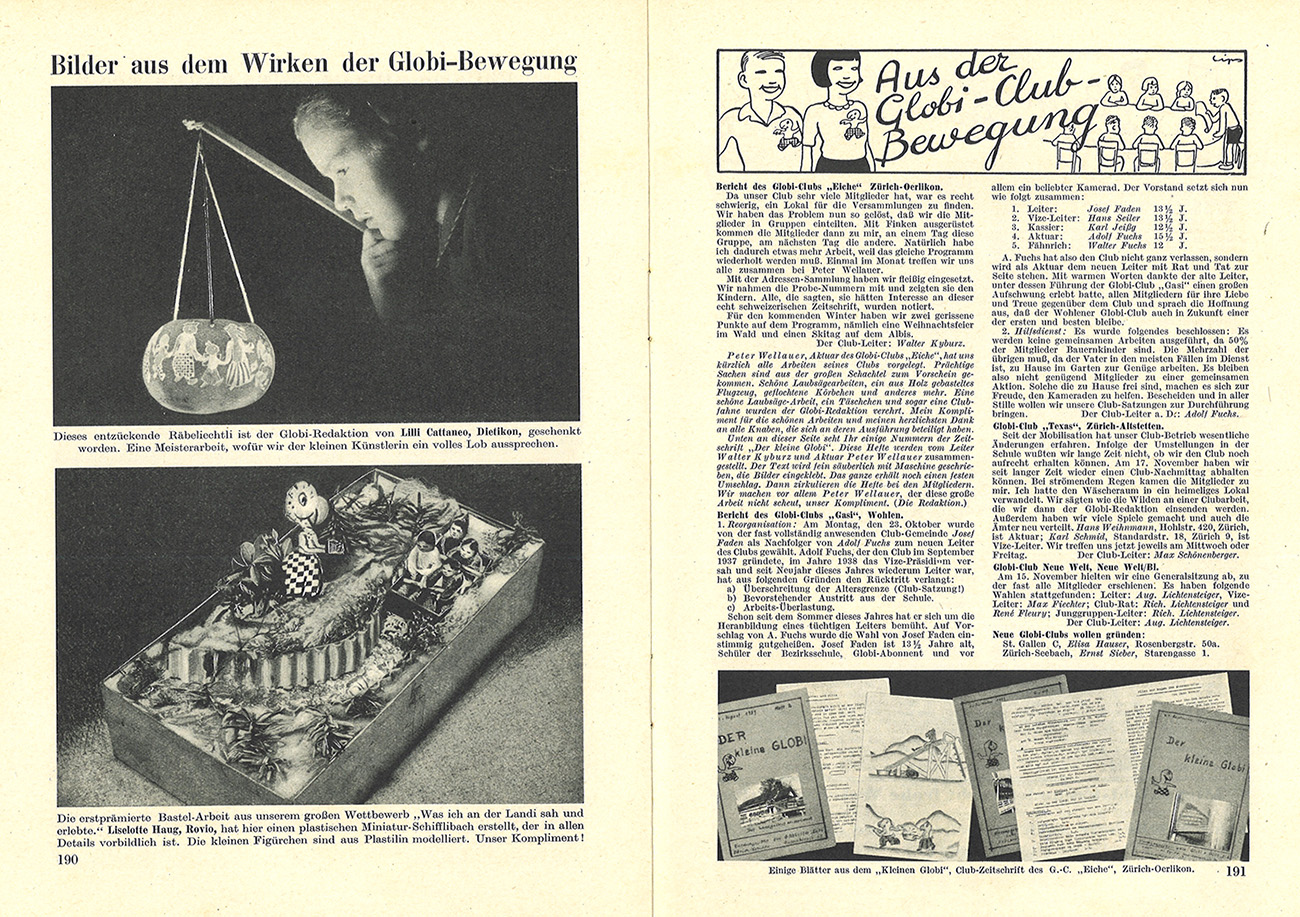
Globi for every age and stage of life
Globi was part of children’s everyday lives – in the shape of a variety of promotional products, in addition to books and magazines. Alongside merchandise and promotional products, ZB Zürich holds Globi artworks made by children and fascinating Globi-related miscellany. These bear testament to the many different ways in which Globi has been part of people’s lives over the decades.
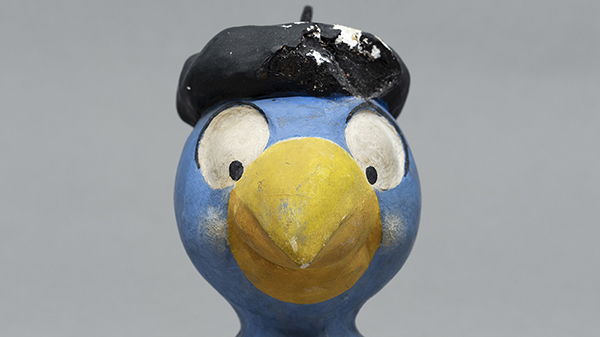
Globi arts and crafts
Globus company culture involved allowing children to come and visit the publishing house and have a look around. Day-to-day business also included answering Globi’s many letters and thanking fans for the drawings and craft projects they sent in. Readers who took part with their own works of art were awarded prizes or honourable mentions. The children also discovered a whole new side to their muse – quite literally. A little plaster model of Globi’s head allowed them to see their favourite character – always depicted from the side – facing head on for once.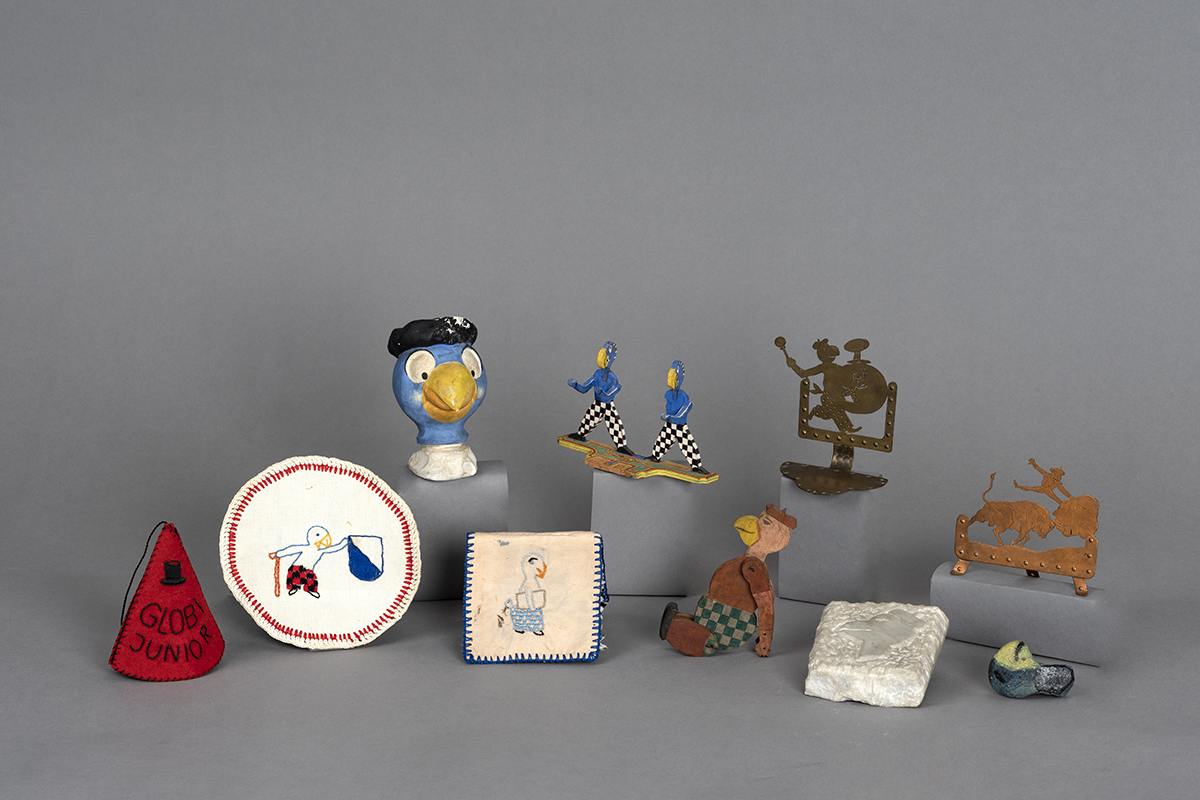
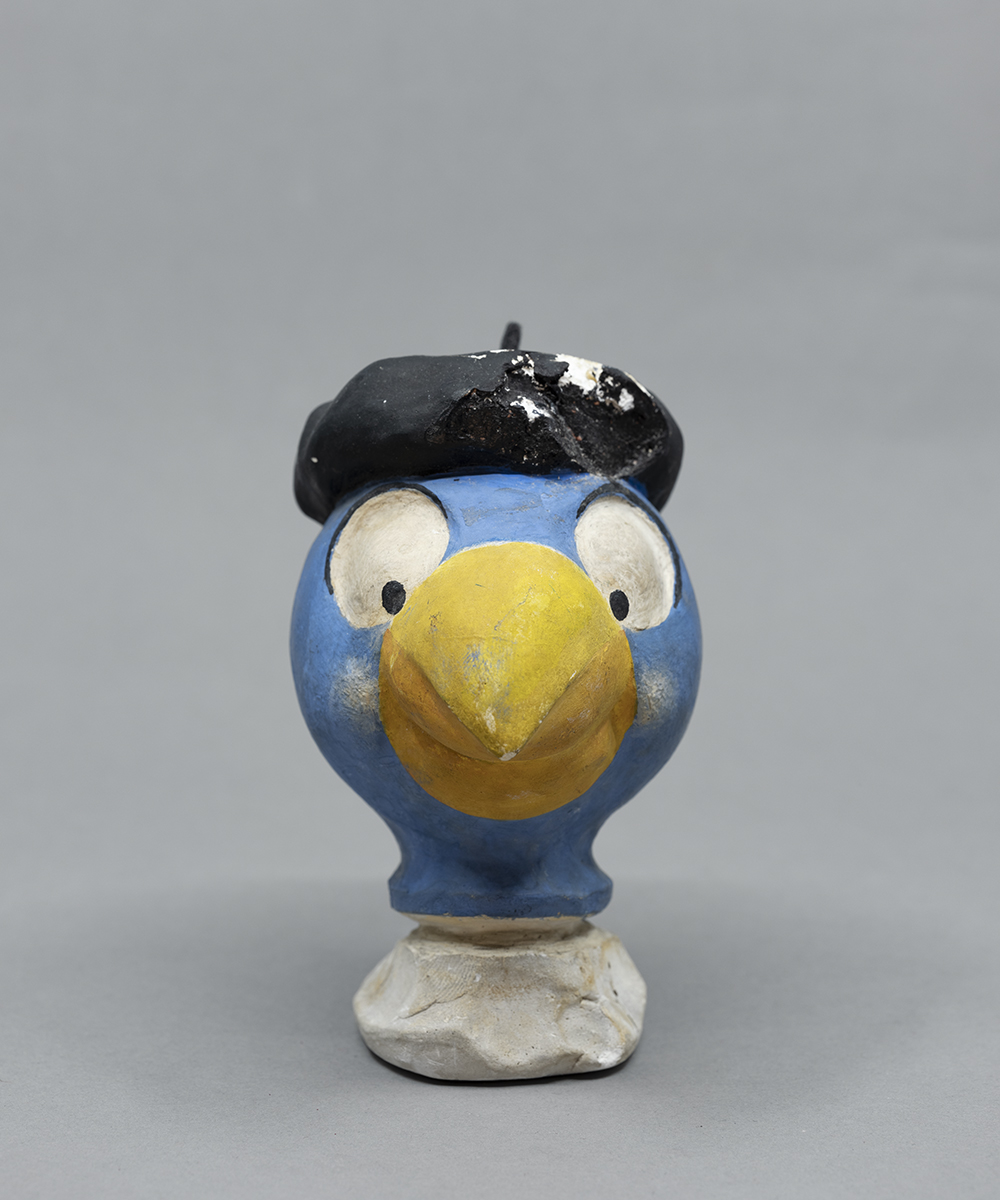
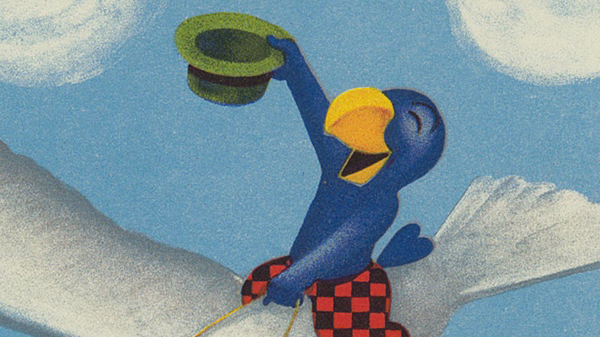
Postcard greetings from the Landi show
The Globi Verlag publishing house cleverly drew upon events such as the 1939 Swiss national exhibition or Globi’s 20th birthday for its publishing and marketing activities. Visiting the attractions of the ‘Landi’, as the exhibition was known for short, and drawing or writing down their memories of the event for a competition were hugely formative experiences for children at the time. The company also published a Globi book about the character’s visit to the exhibition, along with a postcard set. Only one edition of the ‘Landi’ book was printed, and it’s now among the rarities that sell for top prices on the antiques market.
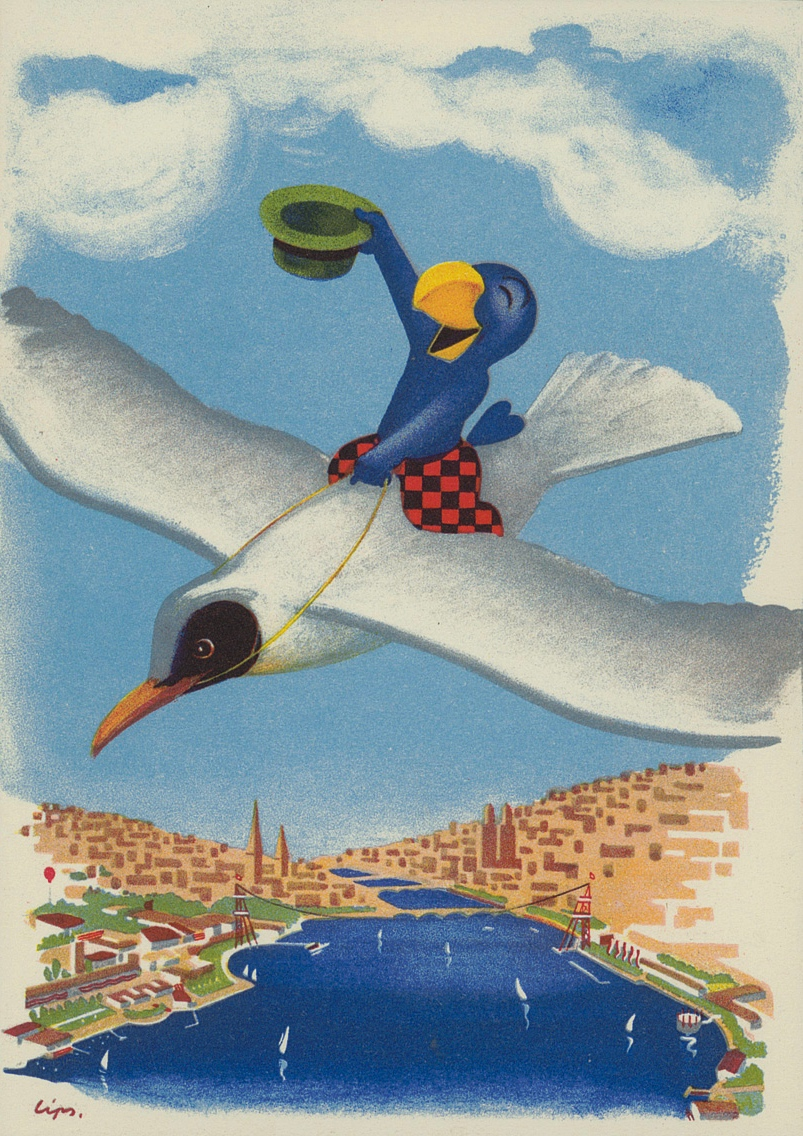
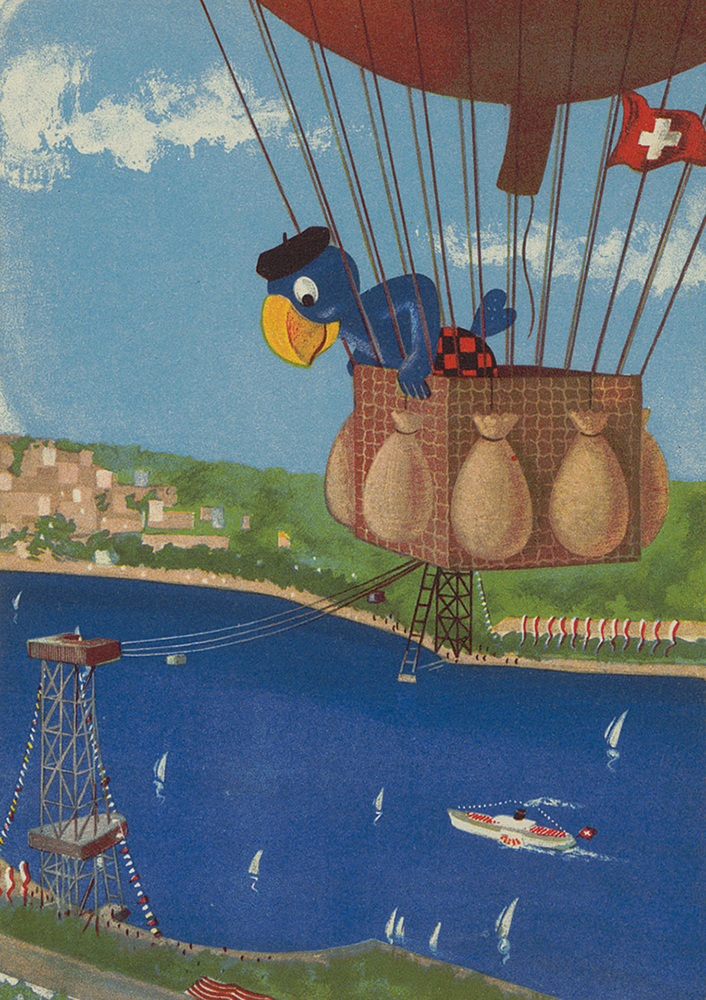
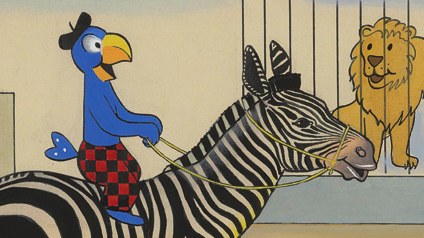
Colour in Globi
Over twenty colouring books featuring Globi designs have been published. Where titles such as ‘Globi im Zoo’ (Globi at the Zoo) and ‘Alle Vögel sind schon da’ (All the Birds Are Here) were beloved by children in the past, today’s popular stories include ‘Globi bei der Rega’ (Globi Meets the Swiss Air Rescue) and ‘Globi besucht die Kelten’ (Globi visits the Celts).
In a cover design for ‘Globi im Zoo’ (Globi at the Zoo) from 1947, the involvement of J.K., Schiele is visible in his comment on the margins: ‘This page needs a zookeeper with a hat!’ This suggestion was also implemented via another design in the final preliminary sketch.
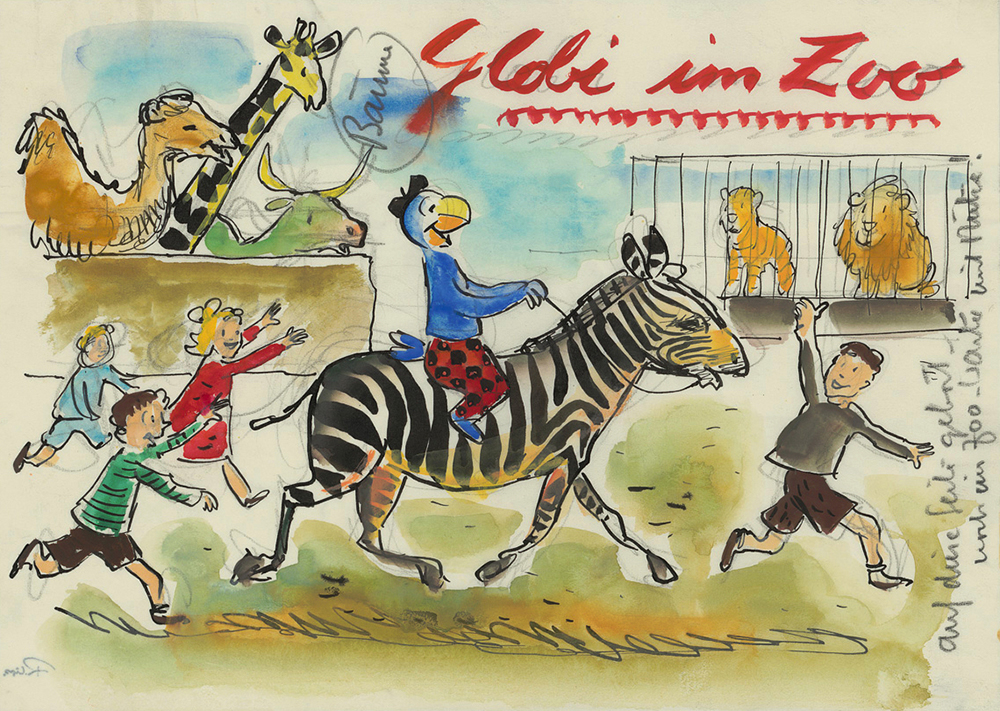
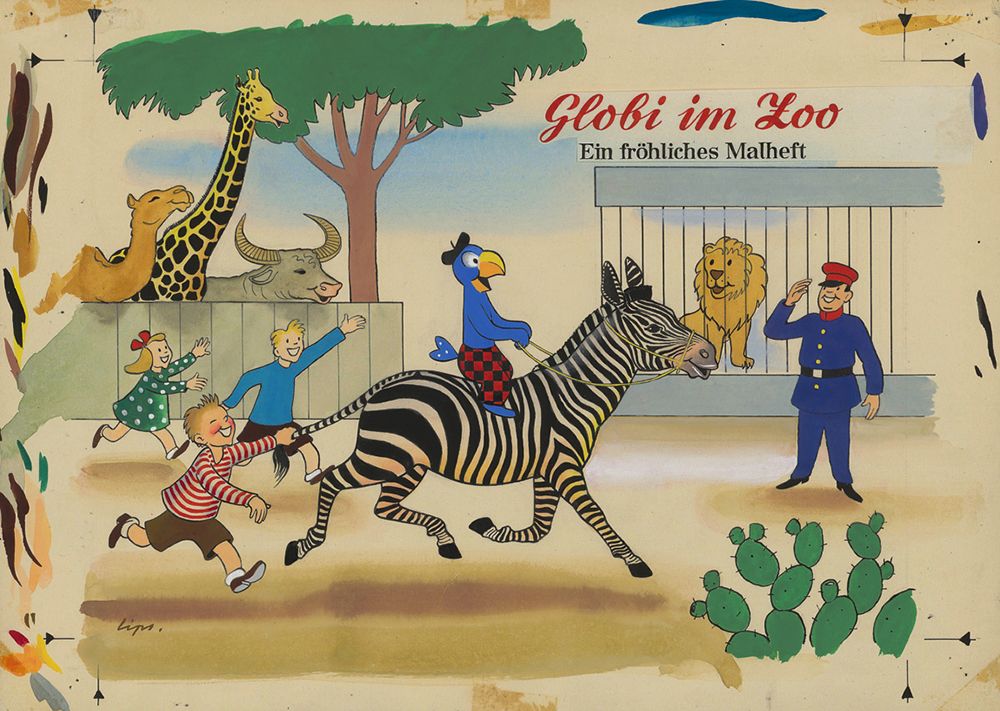
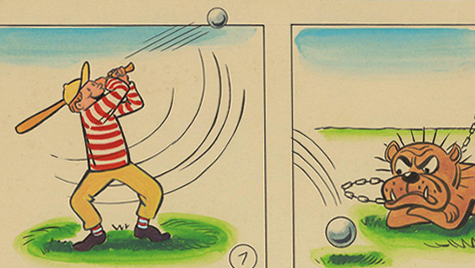
Globi in America
In the years following the war, J.K. Schiele also tried to establish Globi on the American market. His – ultimately fruitless – efforts are documented in four designs. A sample story depicted Globi ‘solving’ a problem in a baseball game in his typically unconventional style. However, as Ingrid Tomkowiak explained, Schiele was unable to persuade publishers that European humour would translate to the US, as Globi was considered too well-behaved for American tastes.
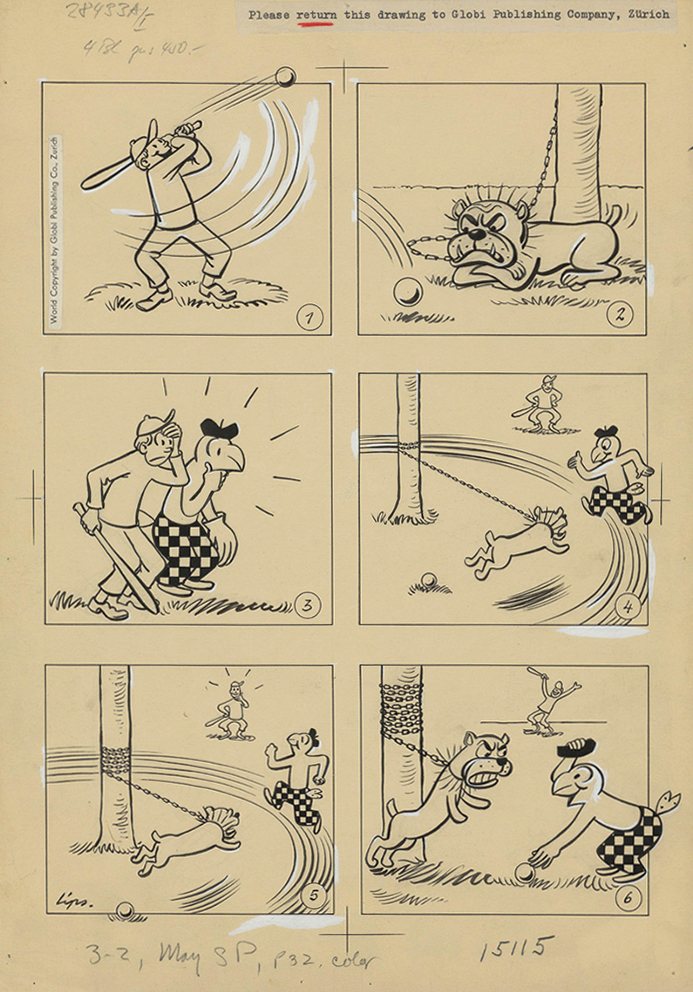
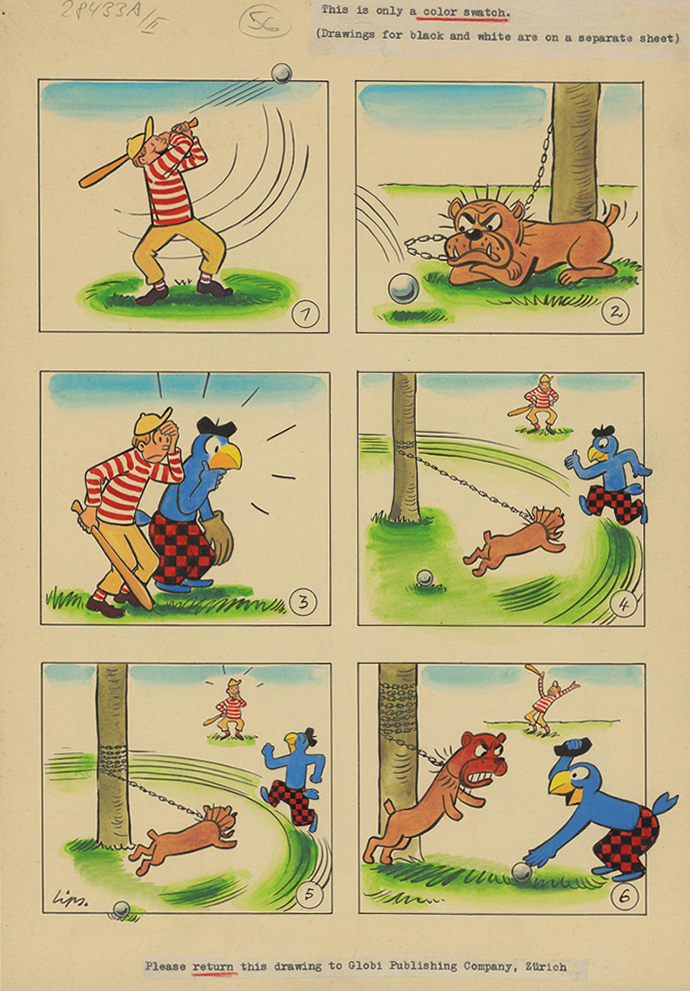
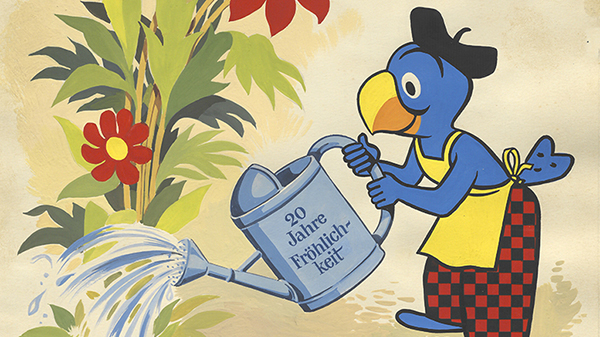
Happy anniversary
Two designs by Robert Lips for a picture celebrating Globi’s 20th birthday in 1952 show how promotional images were created. What is likely to have been the first image depicts a big bunch of flowers in a vase, with Globi and two children sitting on the rim. In the second picture, Gobi is watering flowers – which appear to have children’s laughing faces. Globi is more visible in this image, and Lips’s visual humour is more clearly expressed in the faces of the flowers. This design was ultimately printed in the anniversary brochure.
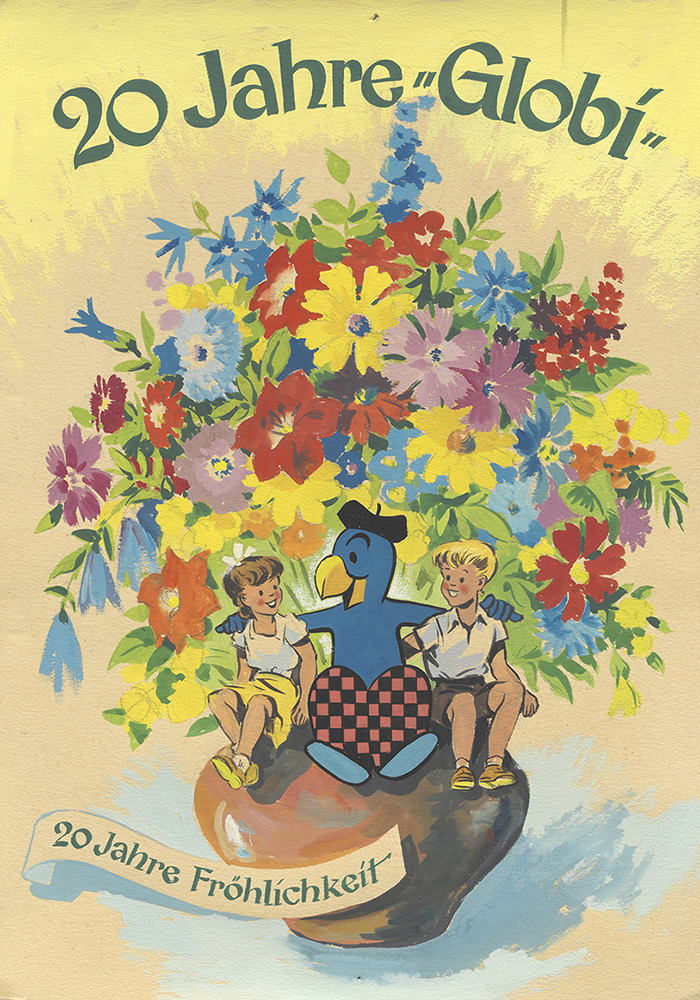
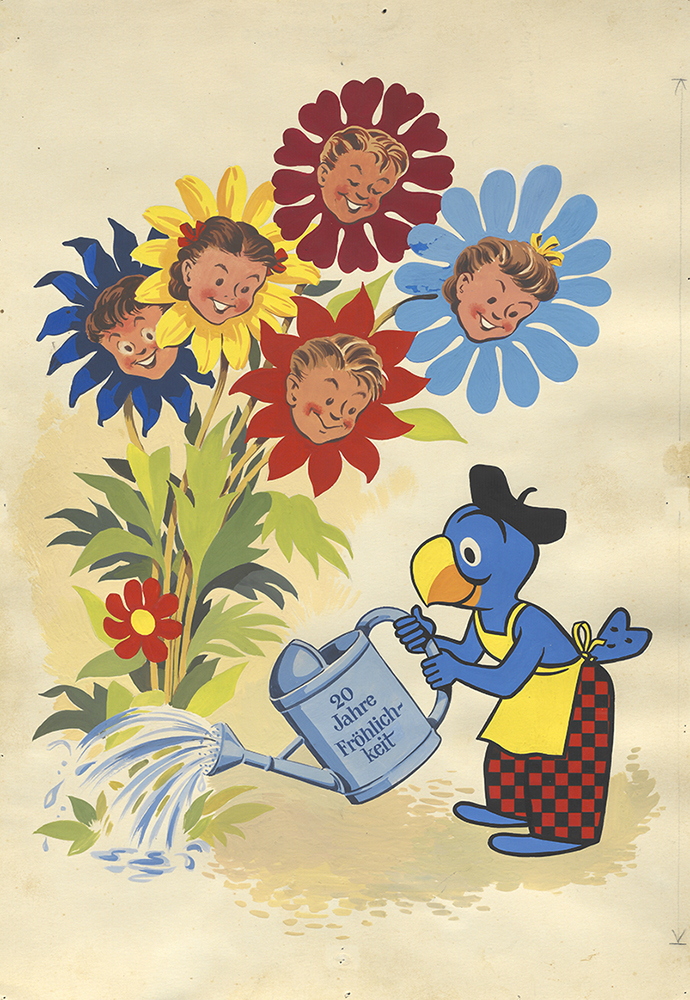
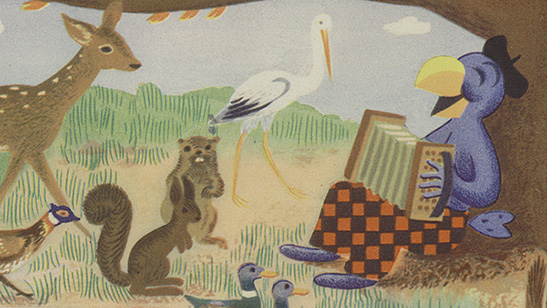
Globi merchandising
From kids’ tableware and toy figurines to bath towels, Globi has been part of his fans’ everyday lives for over 90 years. Promotional items featuring the Globi character were produced from the very beginning, such as a school timetable included with the Globi magazine or as a small promotional gift from Globus warehouses. In addition to the regular storybooks, Globi non-fiction books and cookery books, numerous merchandising products continued to tell the Globi story. These testaments to Globi history are also kept and documented in ZB Zürich.
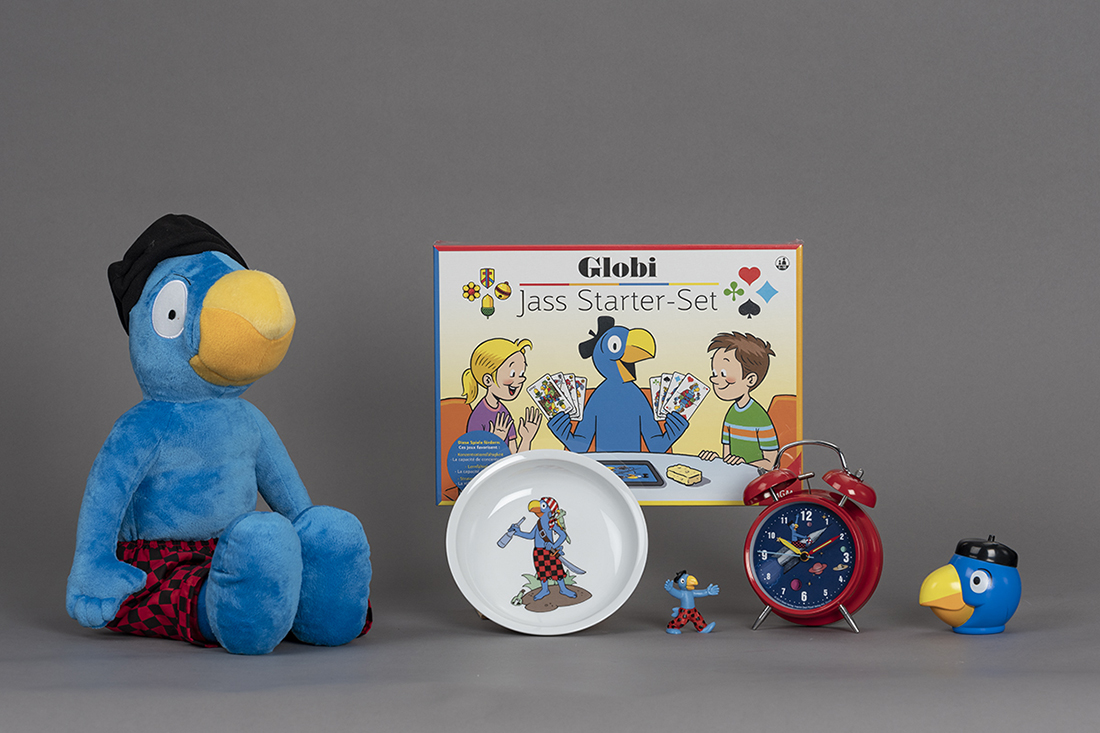
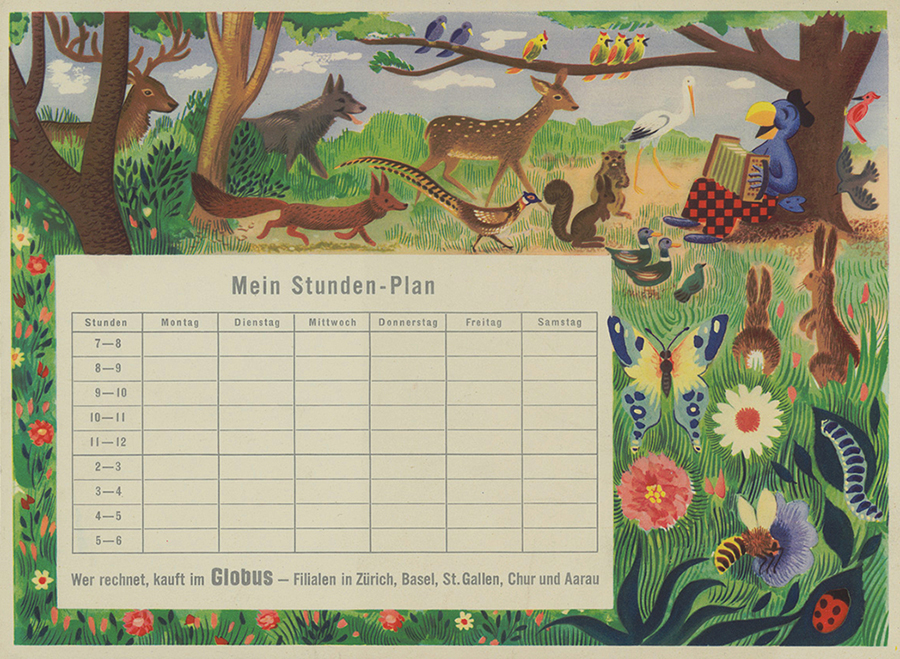
Further reading and viewing
This article features so much reading material on Globi that no further reading is required at the end. Instead, you’ll find a 1972 TV episode marking Globi’s 40‑year anniversary, with a take on the famous bird that’s irreverent and earnest by turns.
‘40 Jahre Globi’ (40 Years of Globi), from the ‘Antenne’ broadcast on 15 March 1972, 7:41 min. ‘Antenne’
was the first local magazine show on Swiss TV. (Video: SRF)
Dr Anna Lehninger, art historian, Graphic Collection and Photo Archive project team member
August 2023
Header image: Globi school timetable, detail, circa 1950. (Estate of J.K. Schiele/ZB Zürich)
